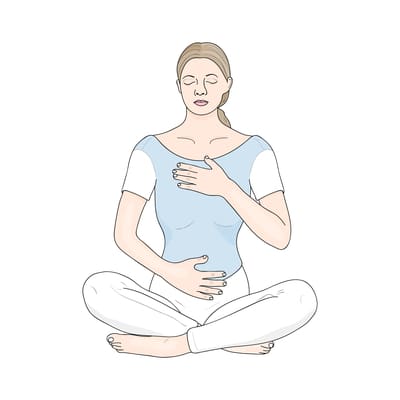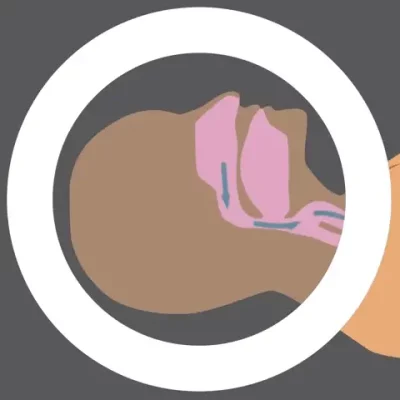Diaphragmatic breathing is a great way to reduce your anxiety, stress levels and reduce your blood pressure.
If you happen to see a baby laying on their back, you’ll see that their belly moves up and down. They practice natural belly breathing, as the lungs and ribs are still in developing. For a baby this is natural, yet most of us do not do this in general as adults. Although, it is a wonderful practice to do so frequently.
What is diaphragmatic breathing?
Diaphragmatic breathing is focused on the diaphragm, a large muscle at the base of your lungs, and does most of the work for you throughout the day in terms of breathing.
Physical Benefits of Diaphragmatic Breathing
Diaphragmatic breathing is incredibly beneficial if you’re looking for overall strengthening of diaphragm, to slow your general breathing rate, and to decrease oxygen demand. These exercises will help to use less energy while breathing, making the actual act a little bit easier.
This is proven beneficial for patients with chronic obstructive pulmonary disease (COPD).
COPD patients have trouble breathing as the air is almost trapped inside the lungs, pushing down and flattening the diaphragm. These exercises are proven to show some relief. Mental Health Benefits of Diaphragmatic Breathing
This type of breathing is an essential skill when coping with:
- Anxiety
- Panic attacks
- Stress
- Other fight or flight responses
It is a powerful tool when experiencing hyperventilation as it stimulates the body’s parasympathetic system. This calming effect slows breathing and heart rate while lowering muscle tension and blood pressure. And much better than breathing in a bag!
Techniques for breathing
The recommended way to practice diaphragmatic breathing:
- Lie on your back on a flat surface.
- Put a pillow behind your head or behind your knees.
- This can also be done sitting or standing if lying down isn’t practical or comfortable.
Next steps:
- Put one hand on your chest and one hand on your belly. The idea is you want to focus on which hand is moving here. The key is to make sure your top hand stays still. Make sure your chest stays as still as possible, focusing on your belly.
- Take a deep breath in.
- Inflate the belly out while leaving the chest still. We are expanding our abdominal muscles.
- Then as you breathe out, actively pull your belly inward toward the back of your spine. We are now tightening the abdominal muscles.
- Continue on repeating these steps.
While performing these techniques, remember to focus on leaving the top hand still, while letting the bottom hand move up and down with the abdominal muscles.

This can take a while to get used to but practice makes perfect, so don’t give up! It is worth the relaxation, lowering the effects of cortisol (the stress hormone in our bodies), lowering our heart rate and blood pressure.
Breathing isn’t enough!
For some of us, a little more guidance and support may be necessary. This is OK! Our bodies sympathetic system (“fight or flight response”) can have a mind of its own and can easily feel completely out of our control.
With the help of a great counselor who you feel comfortable with, you can learn to use this technique in combination with other skills to overcome health and anxiety issues!









This Post Has 2 Comments
It really helped when you said that diaphragmatic breathing is beneficial in strengthening the diaphragm and is powerful when experiencing hyperventilation. My brother plays basketball every day and is having panic attacks due to hyperventilating the last time that he was sent to the hospital. I think I should tell him to look for a Diaphragmic Technique on Monday to help him improve his breathing and control his negative thoughts.
Thank you for your input Hailey. Please do pass this information on to your brother. He will find this technique very effective in getting through various levels of anxiety. Please keep us posted on his progress.